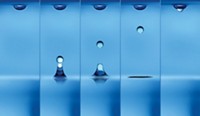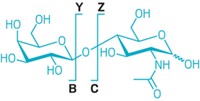Advertisement
Grab your lab coat. Let's get started
Welcome!
Welcome!
Create an account below to get 6 C&EN articles per month, receive newsletters and more - all free.
It seems this is your first time logging in online. Please enter the following information to continue.
As an ACS member you automatically get access to this site. All we need is few more details to create your reading experience.
Not you? Sign in with a different account.
Not you? Sign in with a different account.
ERROR 1
ERROR 1
ERROR 2
ERROR 2
ERROR 2
ERROR 2
ERROR 2
Password and Confirm password must match.
If you have an ACS member number, please enter it here so we can link this account to your membership. (optional)
ERROR 2
ACS values your privacy. By submitting your information, you are gaining access to C&EN and subscribing to our weekly newsletter. We use the information you provide to make your reading experience better, and we will never sell your data to third party members.
Analytical Chemistry
Probing Enantiomer Purity
Stereochemical Analysis: New method quickly reveals the composition of mixtures of enantiomers of carboxylic acids
by Laura Cassiday
August 18, 2011
Molecules that are mirror images of each other can produce vastly different biological effects. For instance, one enantiomer of a drug may alleviate symptoms, while its mirror image lacks activity or even causes side effects. Therefore, synthetic chemists develop methods to selectively synthesize just one enantiomer. Now they can assess the fruits of their labor more easily with a technique that quickly quantifies the relative amount of each mirror image in a mixture of enantiomers (J. Am. Chem. Soc., DOI: 10.1021/ja205775g).
To gauge the composition of a mixture of enantiomers, chemists calculate its enantiomeric excess. For example, if a sample contains 80% of one enantiomer and 20% of its mirror image, the enantiomeric excess is 60%. Chemists currently rely on techniques like high-performance liquid chromatography (HPLC) to accurately determine enantiomeric excess. But these methods are slow and often can’t keep up with the hundreds or thousands of reactions that pharmaceutical companies or academic researchers need to screen when developing new synthetic methods, says Eric Anslyn, a physical organic chemist at the University of Texas, Austin.
Anslyn and his colleagues wanted to find a way to quickly determine the enantiomeric excess of carboxylic acids, which are common components of drugs and polymers. In collaboration with James Canary at New York University, they synthesized a copper-containing achiral molecule. The copper atom has one empty coordination site, so the molecule can serve as a host for chiral carboxylic acid guests. When a guest binds to the copper atom, the metal’s quinoline ligands twist into a propeller shape. The propeller twists in a specific direction, depending on the stereochemistry of the guest.
When the researchers analyzed pure enantiomer–host complexes using a technique called exciton-coupled circular dichroism, they found that the two propeller twists absorbed circularly polarized light differently. Like the enantiomers themselves, the spectra for each molecule were mirror images, with both enantiomers producing a signal at a characteristic wavelength, one positive and one negative. The investigators took spectra of known mixtures of enantiomers to produce a calibration curve, which they then used to determine the enantiomeric excess of a separate set of mixtures.
By comparing the actual enantiomeric excess values for these mixtures with values they calculated from the calibration curve, the researchers found that the technique has an error rate of about 3%. “Our approach is not quite as accurate as HPLC, but it’s up to 100 times faster,” says Anslyn. The team can analyze approximately 100 samples in two hours.
George Gokel, a chemical biologist at the University of Missouri, St. Louis, calls Anslyn’s approach “a simple, general method that holds enormous promise” for quick and easy determination of enantiomeric excess, though he notes that it is still in its early stages. He says that the technique will likely inspire offshoots to analyze enantiomeric compounds with other functional groups.





Join the conversation
Contact the reporter
Submit a Letter to the Editor for publication
Engage with us on Twitter